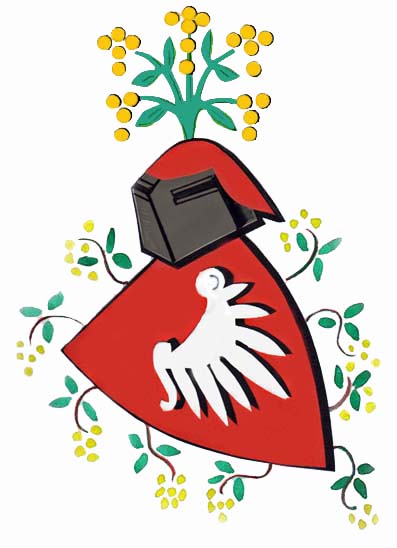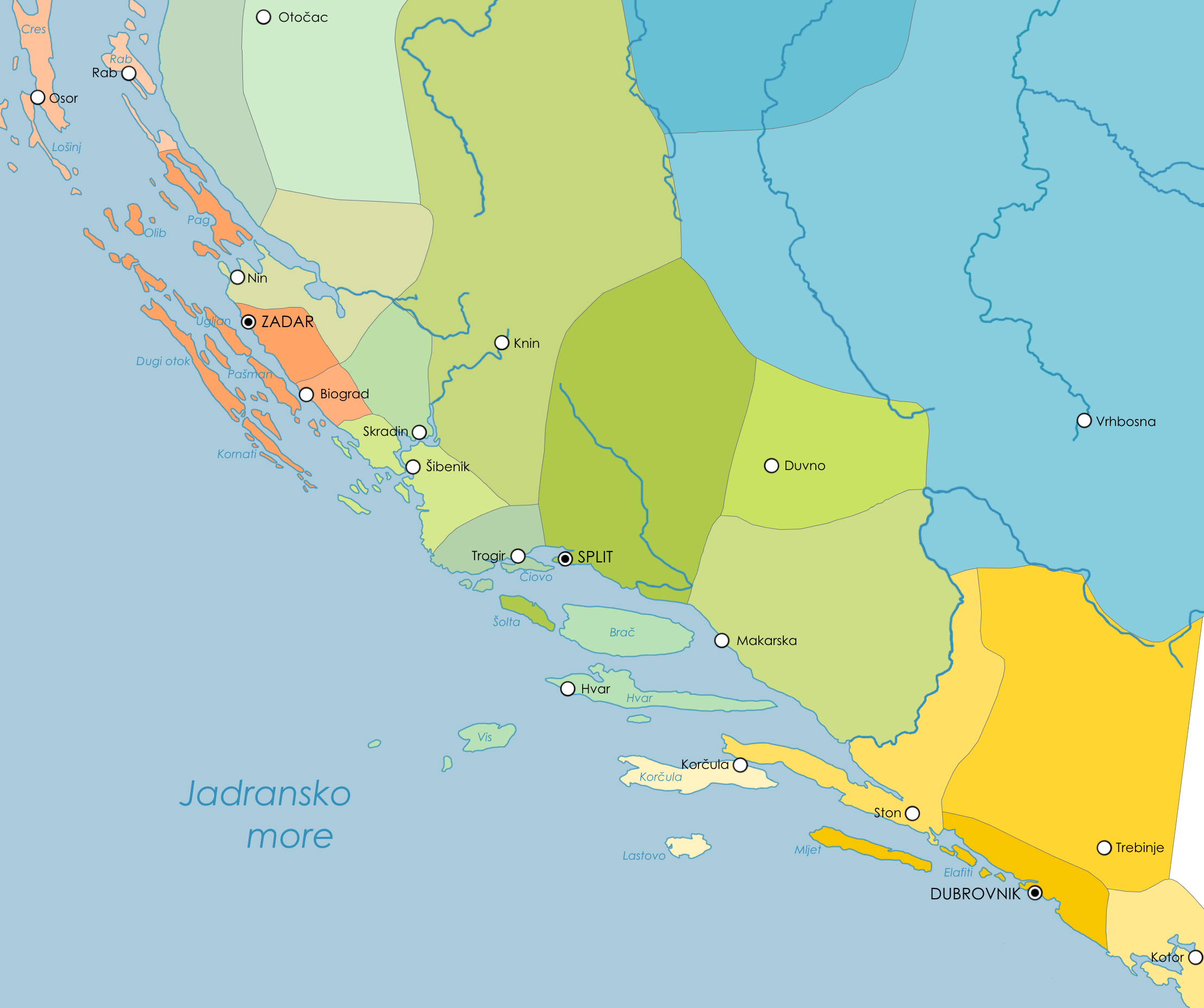|
Roman Catholic Diocese Of Banja Luka
The Roman Catholic Diocese of Banja Luka (Serbo-Croatian: ''Banjalučka biskupija'', Latin: ''Dioecesis Bania Lucensisis'') is a diocese of the Latin Rite of the Roman Catholic Church in western Bosnia. The diocese is centred in the city of Banja Luka, Bosnia and Herzegovina. Erected on July 5, 1881, the diocese is a suffragan of the Archdiocese of Vrhbosna, as the Diocese of Banjaluka. In 1985, the name of the diocese was split to the current diocese of Banja Luka. Bishop Franjo Komarica is head of the diocese. The original Cathedral of Saint Bonaventure in the city was built in 1887. However, an earthquake in 1969 levelled the church. Banja Luka's current cathedral was built in 1974. The city of Banja Luka, and much of the territory that the diocese covers contains an Orthodox Christian majority. The Bosnian War greatly affected the diocese. Virtually all of the churches in the bishopric sustained some damage, and many were destroyed. Many Catholics were expelled from the ... [...More Info...] [...Related Items...] OR: [Wikipedia] [Google] [Baidu] |
Roman Catholic Archdiocese Of Vrhbosna
The Metropolitan Archdiocese of Vrhbosna (also known as the Metropolitan Archdiocese of Sarajevo) is an ecclesiastical archdiocese of the Catholic Church. Its territorial remit includes the eastern parts of Bosnia and Herzegovina and the entirety of the Republic of North Macedonia. Its episcopal see is the city of Sarajevo (Vrhbosna), the capital of Bosnia and Herzegovina. The archdiocese has the following suffragans: in North Macedonia the Diocese of Skopje; in Bosnia, the dioceses of Banja Luka, Mostar-Duvno and Trebinje-Mrkan. Vrhbosna's cathedral is the Cathedral of the Sacred Heart in Sarajevo. Tomo Vukšić currently serves as the archbishop of the archdiocese. History The Diocese of Bosnia (Latin: ''Dioecesis Bosniensis'') existed in Bosnia between the 11th and 15th centuries, and remained as a single title until 1773 [...More Info...] [...Related Items...] OR: [Wikipedia] [Google] [Baidu] |
Bosnian War
The Bosnian War ( sh, Rat u Bosni i Hercegovini / Рат у Босни и Херцеговини) was an international armed conflict that took place in Bosnia and Herzegovina between 1992 and 1995. The war is commonly seen as having started on 6 April 1992, following a number of earlier violent incidents. The war ended on 14 December 1995 when the Dayton accords were signed. The main belligerents were the forces of the Republic of Bosnia and Herzegovina and those of Herzeg-Bosnia and Republika Srpska, proto-states led and supplied by Croatia and Serbia, respectively. The war was part of the breakup of Yugoslavia. Following the Slovenian and Croatian secessions from the Socialist Federal Republic of Yugoslavia in 1991, the multi-ethnic Socialist Republic of Bosnia and Herzegovina – which was inhabited by mainly Muslim Bosniaks (44%), Orthodox Serbs (32.5%) and Catholic Croats (17%) – passed a referendum for independence on 29 February 1992. Political representatives of the ... [...More Info...] [...Related Items...] OR: [Wikipedia] [Google] [Baidu] |
Tropolje
Tropolje was a historical Croatian duchy, which was located on the borderland of Croatia, Bosnia and Zachlumia. Its exact borders are disputed among historians. History Vjekoslav Klaić thought that Tropolje encompassed the Cetinsko Polje, Livanjsko Polje and Duvanjsko Polje, and possible other poljes on the borderland of Croatia, Bosnia, and Zachlumia. Marko Perojević, on the other hand, argued that Tropolje included the Kosovo Polje (near Knin), Petrovo Polje (near Drniš) and Mućko Polje. Additionally, Dominik Mandić included Livanjsko Polje as well. Sima Ćirković held that Tropolje streched over Livanjsko Polje, Duvanjsko Polje and Glamočko Polje. Krunoslav Draganović and Damir Karbić argued that Tropolje included Duvanjsko Polje, Kupreško Polje, and Glamočko Polje. Karbić, agreeing with Draganović, said that a document from 1301 supports his conclusion and that the northern borders thus defined, fitted the borders of the Diocese of Duvno. The document ... [...More Info...] [...Related Items...] OR: [Wikipedia] [Google] [Baidu] |
Islamization
Islamization, Islamicization, or Islamification ( ar, أسلمة, translit=aslamāh), refers to the process through which a society shifts towards the religion of Islam and becomes largely Muslim. Societal Islamization has historically occurred over the course of many centuries since the spread of Islam outside of the Arabian Peninsula through the early Muslim conquests, with notable shifts occurring in the Levant, Iran, North Africa, the Horn of Africa, West Africa, Central Asia, South Asia (in Afghanistan, Maldives, Pakistan, and Bangladesh), Southeast Asia (in Malaysia, Brunei, and Indonesia), Southeastern Europe (in Albania, Bosnia and Herzegovina, and Kosovo, among others), Eastern Europe (in the Caucasus, Crimea, and the Volga), and Southern Europe (in Spain, Portugal, and Sicily prior to re-Christianizations). In contemporary usage, it may refer to the perceived imposition of an Islamist social and political system on a society with an indigenously different social ... [...More Info...] [...Related Items...] OR: [Wikipedia] [Google] [Baidu] |
Ottoman Conquest Of Bosnia And Herzegovina
The Ottoman conquest of Bosnia and Herzegovina was a process that started roughly in 1386, when the first Ottoman attacks on the Kingdom of Bosnia took place. In 1451, more than 65 years after its initial attacks, the Ottoman Empire officially established the Bosansko Krajište (Bosnian Frontier), an interim borderland military administrative unit, an Ottoman frontier, in parts of Bosnia and Herzegovina. In 1463, the Kingdom fell to the Ottomans, and this territory came under its firm control. Herzegovina gradually fell to the Ottomans by 1482. It took another century for the western parts of today's Bosnia to succumb to Ottoman attacks, ending with the capture of Bihać in 1592. Origins and etymology The entire territory that is today known as Bosnia and Herzegovina was not conquered by the Ottoman Empire at once, in a single battle; rather, it took the Ottoman Empire several decades to conquer it. Military units of the Ottoman Empire made many raids into feudal principalities in ... [...More Info...] [...Related Items...] OR: [Wikipedia] [Google] [Baidu] |
Roman Catholic Archdiocese Of Zagreb
The Roman Catholic Archdiocese of Zagreb ( hr, Zagrebačka nadbiskupija, la, Archidioecesis Zagrebiensis) is the central archdiocese of the Catholic Church in Croatia, centered in the capital city Zagreb. It is the metropolitan see of Croatia, and the present archbishop is Josip Bozanić. gcatholic.org. It encompasses the northwestern continental areas of Croatia. Suffragan dioceses  * Roman Catholic Diocese of Bjelovar-Križevci
*
* Roman Catholic Diocese of Bjelovar-Križevci
*
|
Diocese Of Bosnia
Diocese of Bosnia (Latin: ''Dioecesis Bosniensis'') was a Roman Catholic diocese that existed in Bosnia between the 11th and 15th centuries, and remained formally in existence until 1773."Diocese of Bosnia (Bosna)" ''''. David M. Cheney. Retrieved February 29, 2016"Metropolitan Archdiocese of Đakovo–Osijek" ''GCatholic.org''. Gabriel Chow. Retrieved February 29, 2016 History [...More Info...] [...Related Items...] OR: [Wikipedia] [Google] [Baidu] |
Roman Catholic Diocese Of Senj-Modruš
The Diocese of Senj-Modruš (german: Zengg-Modrus, it, Diocesi di Modruš, lat, Dioecesis Modrussensis) was located in the historical Kingdom of Croatia, while it was in personal union with Kingdom of Hungary, and it was suffragan of Zagreb. The year of its foundation is not known. Miraeus, about 1150-1160, was the first bishop. The See of Modruš (Modrus) was established at Krbava (Latin: ''Corbavia'') in Lika region in 1185. Pius II (1458-1464) moved the former see from Krbava to Modruš, as it suffered from the advance of the Turks. From that time it was known as the See of Modruš. Urban VIII united the See of Senj with that of Modruš. Gregory XVI in 1836 confirmed this union "per aequalitatem". Until 1600 the see was suffragan of Split, later of Esztergom, then of Kalocsa; since 1852 it was suffragan of Zagreb. The diocese consisted of Rijeka, of some parts of the "Komitat" of Zagreb, and of the Croatian Military Frontier. It was divided into five archdeaneries and fiftee ... [...More Info...] [...Related Items...] OR: [Wikipedia] [Google] [Baidu] |
Roman Catholic Diocese Of Knin
The Diocese of Knin ( la, Tininum, also ''Tinum'') was founded in 1050 and is today a titular see of the Latin Church of the Catholic Church. Its ''cathedra'' was located in Knin,''Annuario Pontificio 2013'' (Libreria Editrice Vaticana 2013 ), p. 991 Croatia. History The history of the diocese of Knin can be traced from the mid-11th century when a court bishop was established by the Kings of Croatia under the title "Bishop of the Croats" (''episcopus Chroatorum''). Its see was originally located in the Romanesque church of Saint Mary in the royal village of Biskupija near Knin. Following the 1185 ecclesial council in Split, the bishop was transferred to Knin, and renamed "Bishop of Knin". The construction of a new cathedral was initiated in 1203, on the basis of a previous 10th-century royal monastery in Kapitul, and was consecrated during the tenure of Bishop Nicholas (1270-1272). A history of the successive bishops, from Mark in 1050 to Joseph in 1755, is given in Daniele Far ... [...More Info...] [...Related Items...] OR: [Wikipedia] [Google] [Baidu] |
Diocese Of Nona
This is a list of the bishops of Nin, named after the town of Nin, Croatia. The Bishopric was most likely founded in the middle of the 9th century. Fine, 1991, p. 254"Diocese of Nona (Nin)" '' Catholic-Hierarchy.org
''Catholic-Hierarchy.org'' is an online database of bishops and dioceses of the Roman Catholic Church and Eastern Catholic Churches. The website is not officially sanctioned by the Church. It is run as a private project by David M. Cheney in ... ''. David M. Cheney. Retrieved October 7, 2016 [...More Info...] [...Related Items...] OR: [Wikipedia] [Google] [Baidu] |
Roman Catholic Archdiocese Of Split-Makarska
The Roman Catholic Archdiocese of Split-Makarska ( hr, Splitsko-makarska nadbiskupija; la, Archidioecesis Spalatensis-Macarscensis) is a Metropolitan archdiocese of the Latin Rite of the Roman Catholic church in Croatia and Montenegro."Metropolitan Archdiocese of Split-Makarska" ''''. David M. Cheney. Retrieved September 25, 2016"Archdiocese of Split-Makarska" ''GCatholic.org''. Gabriel Chow. Retrieved September 25, 2016 The diocese was established in the 3r ... [...More Info...] [...Related Items...] OR: [Wikipedia] [Google] [Baidu] |






